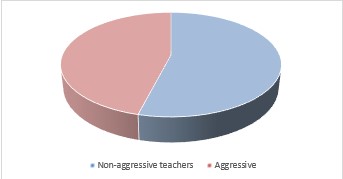Demystifying the Relationship between Teaching Aptitude and Aggressive Behavior among Pre-Service Teachers for Quality Education
Main Article Content
Abstract
The ever-evolving and ever-adapting nature of human behavior assists humans in evolving and adapting to new civilizations and also helps to expand horizon of knowledge and intellect, paving way to reach the pinnacle of various professions. Right from the Vedic era (c. 1500 – c. 500 BCE) to date teachers equip us with all necessary skills and knowledge required to adapt to the dynamic professional world and evolve as a person. Learning is life itself, during this course of lifelong learning, few things learned are from our own experience and the rest is taught by parents, teachers and others. A teacher is a role model for every student their personality, aptitude, and attitude mold the child as desired. Teachers’ aptitude for teaching decides a teacher’s success as a professional and learners’ development as a whole. Teachers’ aptitude for teaching might be innate ability but it can be manifested with appropriate and adequate practices such as behavioral grooming apt for the profession. There are many behavioral issues that make a person unfit for the teaching profession, aggression is one of them. As a human we all have a fair chance to show aggressive behavior at some junctures in our life, the degree may vary. The same goes for the teachers as well. Teaching aptitude is though innate, and aggressive behavior might be unavoidable. In this paper, the researcher based upon empirical evidence has tried to explore the relationship between teaching aptitude and aggressive behavior among pre-service teachers for quality education.

